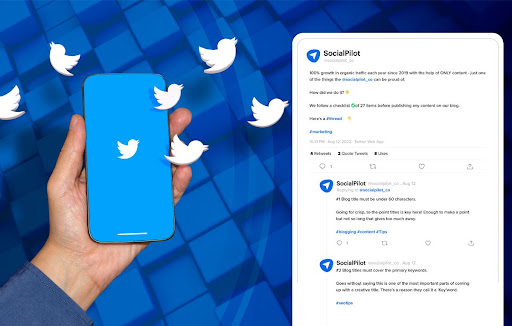The Impact of Virtual Reality on Social Connections

Virtual Reality (VR) is revolutionizing how people experience and engage with the world, including the way we connect with others. It has transformed from being a tool for gaming and entertainment to an innovative medium for social interaction and connecting people across the globe. As VR technology advances, its role in shaping social connections continues to grow, offering new opportunities and challenges.
This article explores the impact of virtual reality on social connections, detailing its evolution, advantages, and future potential. Let’s dive into how VR is changing the way we interact in personal, professional, and virtual spaces.
What Is Virtual Reality?
Virtual Reality (VR) immerses users in simulated environments that can mimic real-world or imaginative settings. By wearing headsets and using motion-tracking technology, individuals can interact with these environments in real-time. Unlike traditional digital platforms, VR provides a sense of presence, making users feel as though they are physically present in the virtual world.
From gaming to healthcare, VR is increasingly being used in diverse fields. However, one of its most transformative effects is on how we connect and communicate socially.
The Evolution of Social Connections
Social connections have evolved dramatically over time. In the past, interactions were largely face-to-face, relying on physical proximity. The internet and social media then introduced virtual communication, allowing people to connect across vast distances.
Virtual Reality represents the next phase in this evolution:
- It moves beyond text-based chats and video calls to create immersive environments where people can interact more naturally.
- Unlike traditional social media, VR offers a shared spatial experience, simulating physical presence.
This progression underscores VR’s potential to redefine the way we build and maintain relationships in a digital age.
How Virtual Reality Enhances Social Interactions
Virtual Reality offers features that significantly enhance social interactions. Let’s explore some of its key contributions:
1. Simulated Face-to-Face Communication
VR enables people to meet in virtual environments, fostering real-time conversations. Unlike video calls, VR interactions replicate the feeling of being in the same room. This is particularly valuable for maintaining relationships across long distances.
2. Shared Experiences
Users can participate in virtual activities together, such as:
- Watching movies in a virtual theater.
- Playing multiplayer games.
- Attending concerts or events.
These shared experiences strengthen bonds, making virtual interactions more engaging and memorable.
3. Accessibility to Unique Environments
VR allows individuals to connect in spaces that might not be possible in real life, such as exploring distant locations, historical landmarks, or fantasy worlds. This expands the possibilities for socialization beyond physical constraints.
Virtual Reality in Social Media Platforms
Social media platforms are embracing VR to create more interactive experiences. For instance:
- Users can create personalized avatars to represent themselves in virtual spaces.
- Platforms like Horizon Worlds by Meta allow users to attend virtual parties, meet-ups, or even workspaces.
- Events such as virtual concerts or meet-and-greets with influencers are becoming increasingly popular.
VR takes social media to the next level by replacing static posts and comments with dynamic, immersive interactions.
The Role of Virtual Reality in Remote Work and Collaboration
With the shift towards remote work, VR has emerged as a powerful tool for professional collaboration:
- Virtual Meetings: Employees can meet in virtual boardrooms, enhancing engagement and reducing the monotony of traditional video calls.
- Team-Building Activities: Virtual environments can host interactive activities, fostering stronger connections among remote teams.
- Workplace Training: Simulated environments can be used for realistic and hands-on training sessions.
By providing a more engaging way to work remotely, VR addresses some of the challenges of digital collaboration, such as feelings of isolation or miscommunication.
READ MORE : https://sumosearch.io/
Psychological Effects of Virtual Reality on Social Connections
Virtual Reality has unique psychological effects on how people connect:
- Emotional Engagement: The immersive nature of VR evokes strong emotions, making virtual interactions feel more real.
- Social Presence: VR creates a sense of being “present” with others, even in virtual spaces. This enhances feelings of closeness and reduces the emotional distance of online communication.
- Potential Downsides: Excessive reliance on VR for socialization may lead to issues like addiction, reduced face-to-face interactions, or difficulty distinguishing between virtual and real-world relationships.
Understanding these psychological impacts is crucial for maximizing the benefits of VR while minimizing its risks.
Challenges and Limitations of Virtual Reality in Social Interactions
Despite its advantages, VR faces several challenges in enhancing social connections:
1. Cost and Accessibility
High-quality VR equipment remains expensive, limiting access for many individuals. This creates a digital divide where only certain groups can benefit from VR’s social capabilities.
2. Technological Barriers
Current VR systems have limitations, such as:
- Bulky hardware.
- Limited battery life.
- Motion sickness for some users.
3. Social Norms in Virtual Spaces
Navigating social etiquette in VR environments can be complex. Issues like harassment or inappropriate behavior in virtual worlds pose new challenges for social interaction.
Addressing these challenges is essential to ensure VR becomes a widely accessible and inclusive tool for social connection.
Future Prospects of Virtual Reality in Enhancing Social Connections
The future of VR in social interactions is bright. Advancements in technology promise to make VR more accessible, immersive, and user-friendly. Here’s what the future may hold:
- Hyper-Realistic Avatars: Avatars will become more lifelike, accurately reflecting users’ expressions and gestures.
- Enhanced Sensory Feedback: Technologies like haptic gloves and suits will make virtual interactions feel more tangible.
- Integration with AI: AI-driven systems may personalize VR experiences, creating environments tailored to individual preferences.
- Mainstream Adoption: As prices drop and technology improves, VR is likely to become a standard part of social and professional communication.
The potential for VR to reshape how we connect is vast, paving the way for deeper, more meaningful interactions.
Conclusion
Virtual Reality is redefining the way we connect with others, offering immersive and engaging experiences that were once unimaginable. From enhancing remote work to transforming social media, VR has the power to strengthen relationships and bridge physical gaps. Additionally, it is starting to influence areas like Fashion and Lifestyle Tip, showing how virtual environments can inspire new trends and creative self-expression. However, challenges like accessibility and potential psychological impacts must be addressed.
As the technology continues to evolve, the impact of virtual reality on social connections will undoubtedly grow. Embracing its potential while navigating its challenges will shape the future of human interaction in a digital age.






